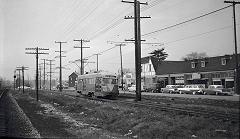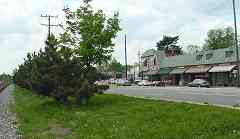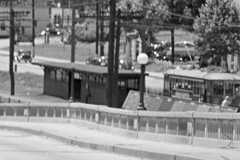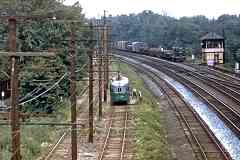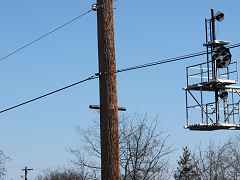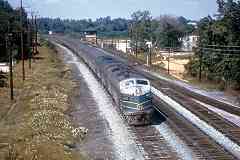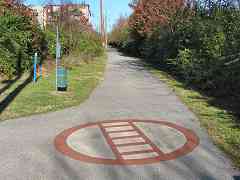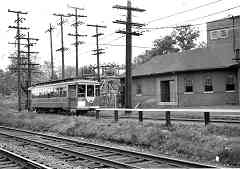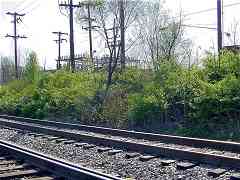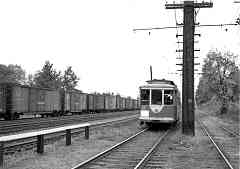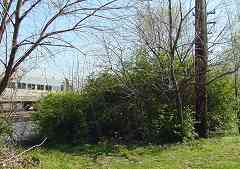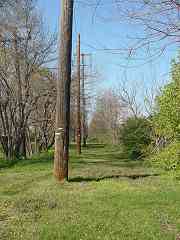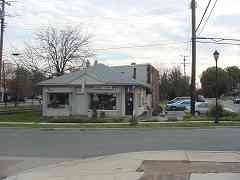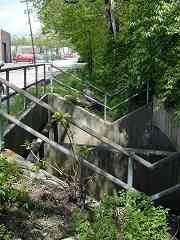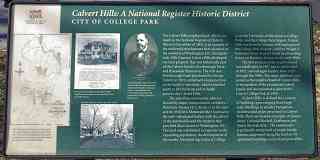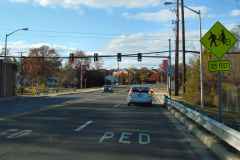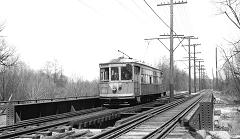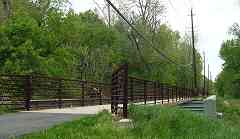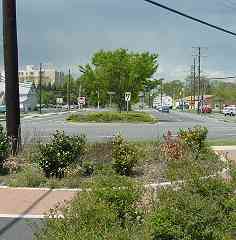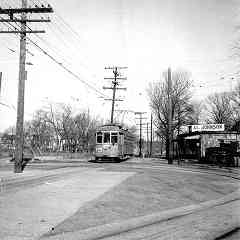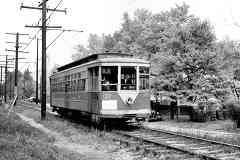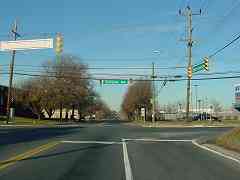|
Competition from automobiles (and buses) resulted in a series of cutbacks
in trolley service to the more distant suburbs.
At the time of this photo, the loop seen here was new, having been added to
accomodate PCC cars, like the one at left, which could be controlled from only
one end. The older cars (right) had operator controls at each end; in the late
1940s they became relegated to shuttle service from here up to Beltsville.
In this chilly winter morning scene commuters transfer from the shuttle
to the newer vintage PCC car to complete the trip to DC. As you might guess,
this (purposely?) added inconvenience must have done little to encourage
ridership, and by the 1950s the shuttle to Beltsville ceased, leaving
Branchville Loop the end of the line.
PCC stands for Presidents' Conference Committee, a 1930s group tasked with
promoting the design of newer, better looking streetcars to lure riders.
The cars became a common standard in many US cities, then spread to Europe
and the USSR. PCC cars can still be found in operation in cities such as
Prague. (Thanks to Herb Harwood for this PCC info.)
| 